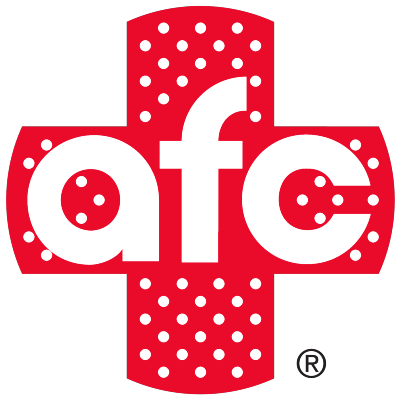Find The Location Nearest Covid-19 Testing
We think you’re located in zip code 37920. Not Right?
Abscess Incision & Drainage in South Knoxville | AFC Urgent Care
We offer walk-in Incision & Drainage 7 days a week for your painful abscess or cyst. Find us on Chapman Highway in South Knoxville with no appointment required.
Contact us today for more information.Abscess vs. Cyst – What’s the Difference?
Although they share a resemblance, cysts and abscesses are two distinct skin conditions with different characteristics and causes.
Cysts are sacs or cavities that develop from abnormal cells in any part of your body, including the skin. The sac may be filled with pus or fluid and feels like a firm lump. Cysts can arise in any location and may go unnoticed until they become enlarged or painful.
An abscess is a pus-filled sac that occurs when the body battles an infection caused by bacteria, fungi or parasites. The most common form of abscess is a skin abscess, which is a pus-filled sac that emerges beneath the skin.
Most incision and drainage procedures are ideal for painful cysts or abscesses. In some cases, a cyst may not require removal unless it increases in size or severity.
How to Recognize an Abscess
The primary sign of an abscess is a painful, compressible region of skin that resembles a large pimple or an open wound. The skin surrounding the abscess may appear red, tender and warm to the touch. In some situations, pus may also discharge from the wound.
Additional symptoms of an abscess can include:
- Swelling around the wound
- Hardened skin surface
- Fever and chills (in severe cases)
Causes of a Skin Abscess
An abscess can occur when bacteria become trapped under your skin due to sweat or oil gland blockage. People typically visit urgent care when the infection and inflammation become unbearable. An abscess may arise when you have a cut or injury to your skin, which becomes vulnerable to bacterial infection.
You may be more prone to developing an abscess if you have:
- Diabetes
- Severe eczema or acne
- A smoking habit
- Close contact with someone who has a Staphylococcus (staph) infection
- A weak immune system
Do I Need Incision & Drainage?
Incision and drainage is a medical procedure used to alleviate pressure and pain caused by the accumulation of fluid in cysts or abscesses. The goal of I&D is to facilitate fluid drainage, which in turn reduces the size of cysts or abscesses, prevents their spread and ensures the elimination of bacteria.
You should consider getting I&D when your cyst or abscess causes mild to severe pain, swelling or discomfort. Antibiotics are only effective in killing bacteria around the abscess but cannot eliminate bacteria in the abscess cavity.
What to Expect during Incision & Drainage
During the I&D procedure, your AFC Urgent Care provider will use a local anesthetic to numb the area surrounding the abscess. Then, they will make a small incision in the abscess to allow pus to drain out. Depending on the depth and size of the wound, additional incisions may be necessary. After the procedure, your provider will clean the area and apply a bandage.
Incision & Drainage Recovery
After your incision and drainage procedure, you’ll be given a set of instructions to follow for proper wound care. These may include keeping the affected area clean and dry and taking antibiotics as prescribed to prevent the recurrence of any infections. Over the course of the next one to two weeks, the wound will begin to heal as new skin grows over the bottom and sides of the abscess.
While side effects are not common after I&D, they may occur. If you experience any unusual pain, bleeding, redness or swelling, please reach out to AFC Urgent Care or a medical professional right away.
 How Can We Help?
How Can We Help?
- PATIENT SERVICES
- COVID-19 SERVICES
- TELECARE
- EMPLOYER RESOURCES
- PATIENT RESOURCES
- ABOUT US

Don't wait to get the medical attention you need.
CALL US TODAY | (865) 951-1103


